Boeing 727 Research
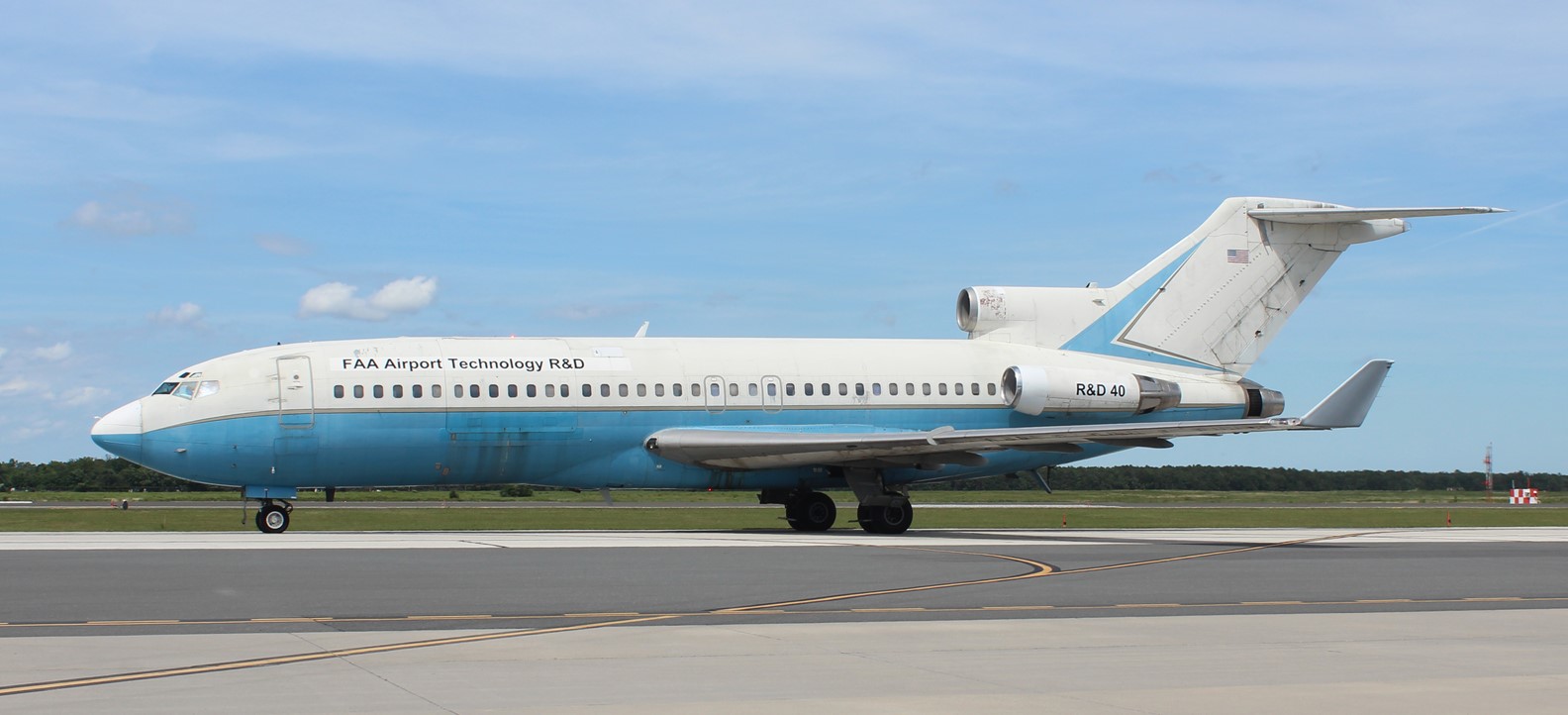
FAA R&D Boeing 727 (Click to Zoom)
The FAA Research Boeing 727 (B727) is a fully capable aircraft custom-fitted for flight and pavement testing needs. Originally manufactured in 1968, the aircraft is designated as a B727-100QC, or “Quickly Changed”, meaning it can be switched between a normal (passenger) configuration and a cargo configuration. This is due to the large cabin cargo door, which allows for ready installation and removal of equipment, along with the high load bearing cabin floor. The aircraft typically remains in a cargo configuration, as this is necessary for its main purposes. Specialty equipment racks have been designed and can be installed or removed as required. The aircraft is equipped with various sensors to enable grounded braking testing, along with pavement roughness and friction characteristics testing.
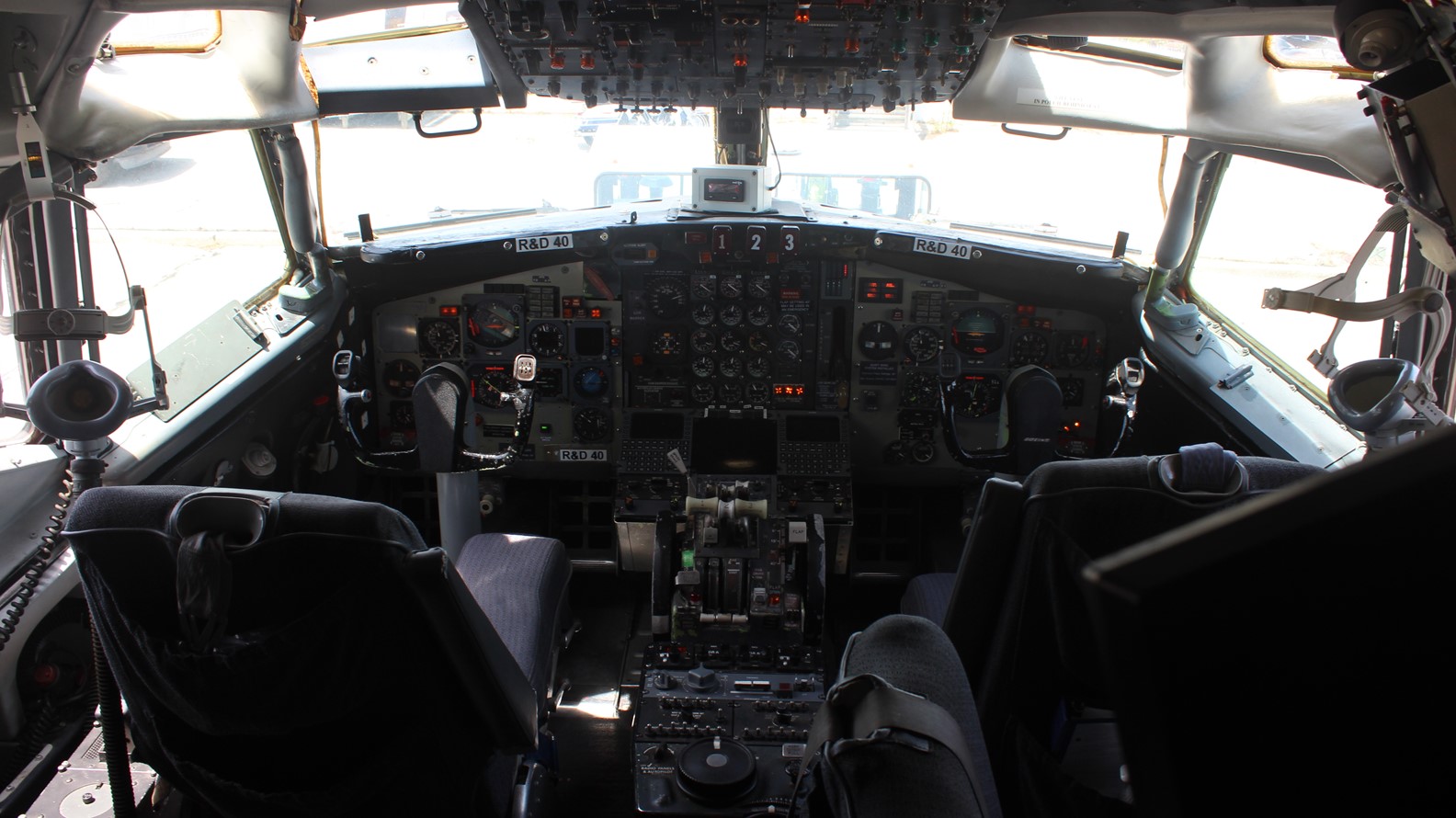
Aircraft Cockpit (Click to Zoom)
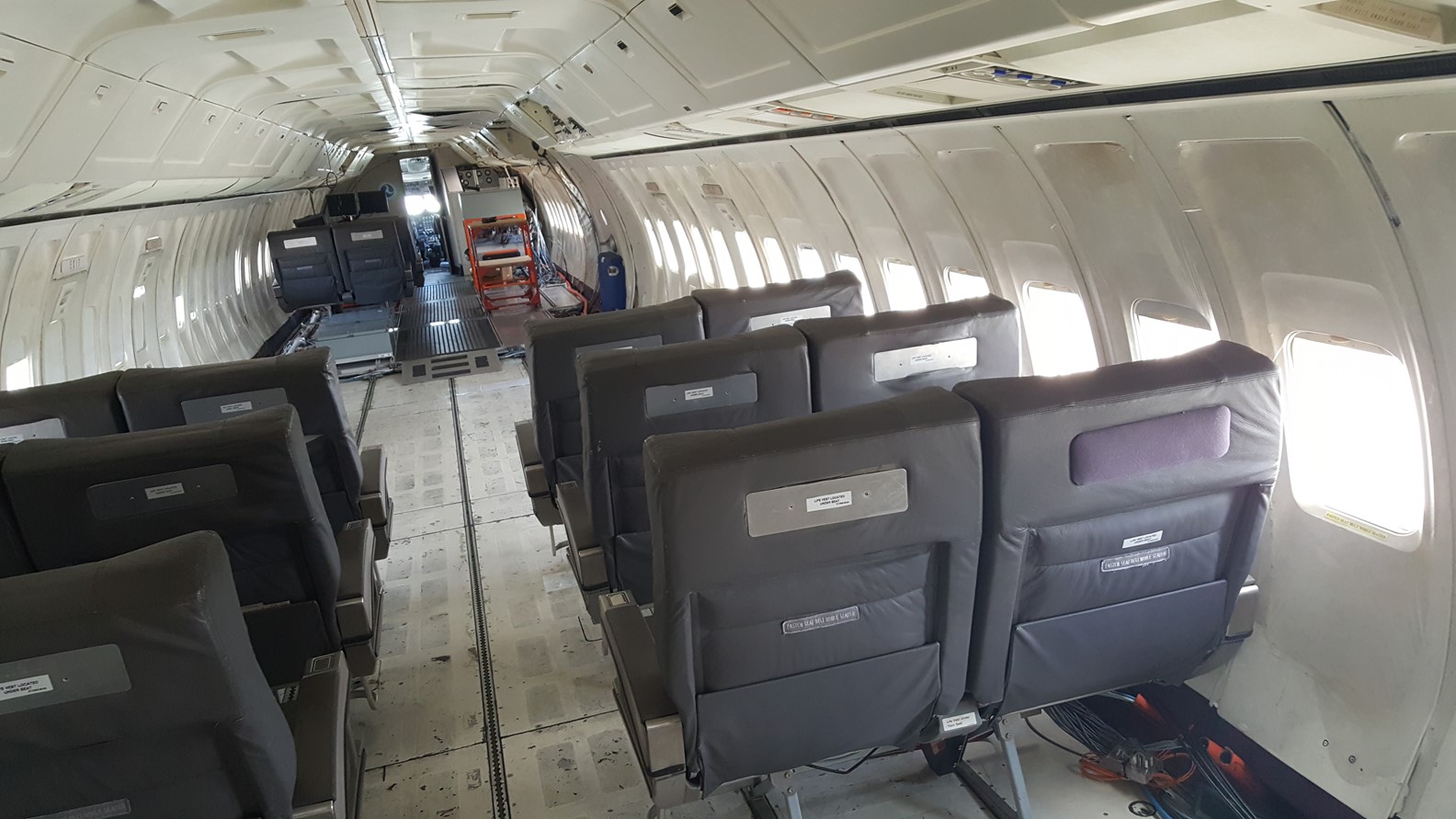
Aircraft Interior with Split Cargo and Passenger Setup (Click to Zoom)
The aircraft itself is controlled as normal from the cockpit, with the expected analog navigation and communication avionics for its time. Controls for the sensors and data collection systems along with data-viewing capabilities use a separate system set up in the cargo area. Tie-down tracks in the cargo bay hold the heavy-duty pallets of equipment in place. Currently, the aircraft is not capable of flight testing, although this has been done in the past.
Sensors are mounted throughout the aircraft to record its dynamic responses, including:
- Vertical shear, horizontal shear, and torque for each wheel
- Wheel friction, speed, and slip amount for each wheel
- Brake temperature and line pressure for each brake
- Center of gravity in all three directions (x, y, z)
- Aircraft speed and position
- Dynamic loading responses
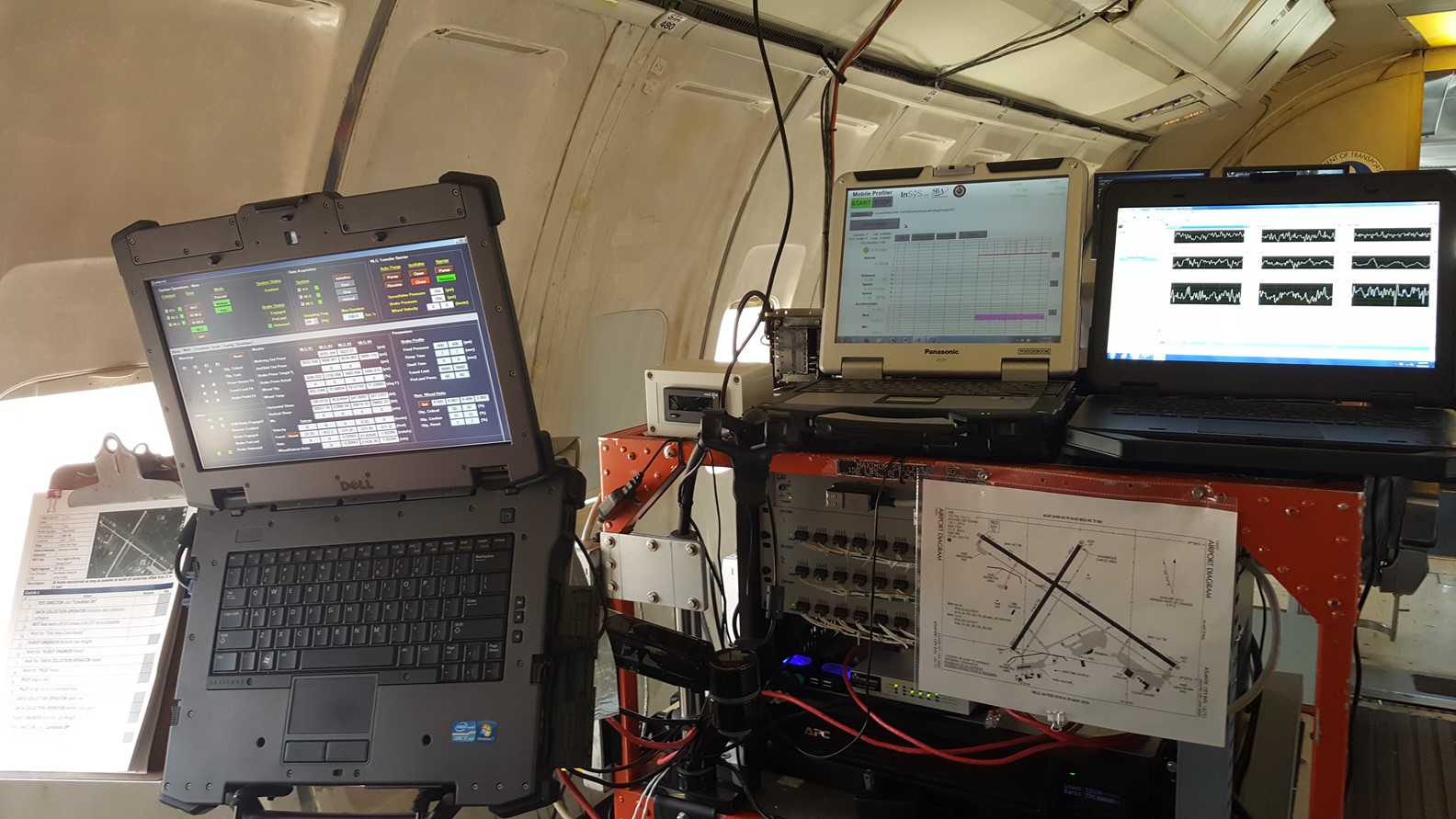
Research Equipment Output Display and Controls (Click to Zoom)
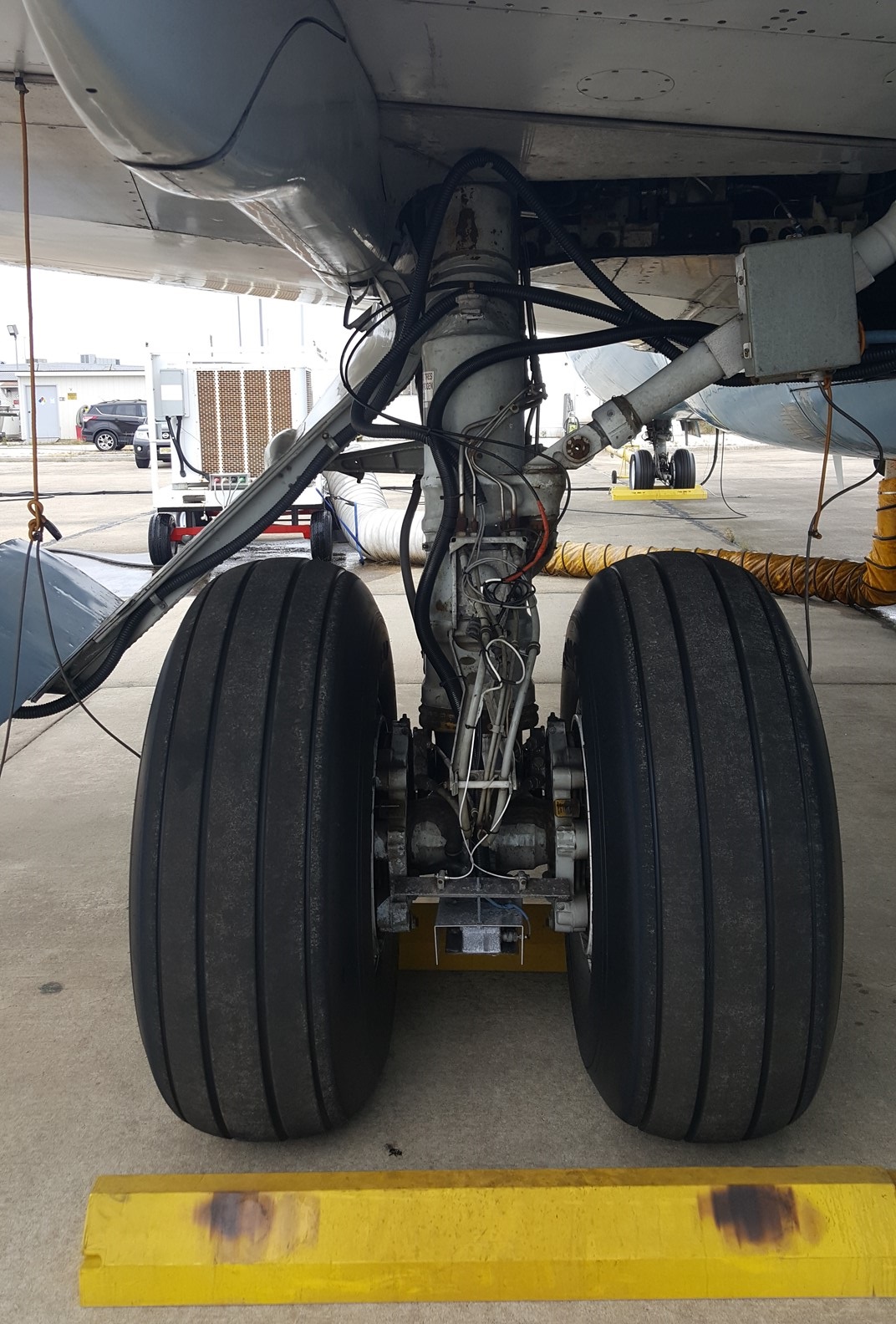
Main Gear Equipped with Sensors (Click to Zoom)
In its most recent outing, the FAA Research B727 was deployed at the Atlantic City Airport (designation ACY) runway 13-31 to perform roughness measurements. The aircraft had been outfitted with additional accelerometers at the center of gravity, pilot’s seat, nose gear, and main gear for this testing. In addition, an inertial profiler was mounted to the main gear along with a GPS recorder. Tests were run down the runway at 20 knots and 100 knots. The SurPro walk-behind surface profiler was used on the same paths to record surface profiles of the pavement. Runs taken at 20 knots were compared to testing done with the NDT Van and its inertial profiler. Runs taken at 100 knots (with the real B727) were compared to B727 acceleration simulations run in the ProFAA software on the profiles taken by the SurPro. Finally, the simulated B727 acceleration results were compared indirectly to testing done with the FAA’s Boeing 737 flight simulator at the Mike Monroney Aeronautical Center.
For more information on the devices and software mentioned on this page, follow the links to the detailed FAA webpages.
Inertial Profiler
NDT Van
Walk-Behind Surface Profiler
ProFAA
Return to Showcase Research Projects Overview